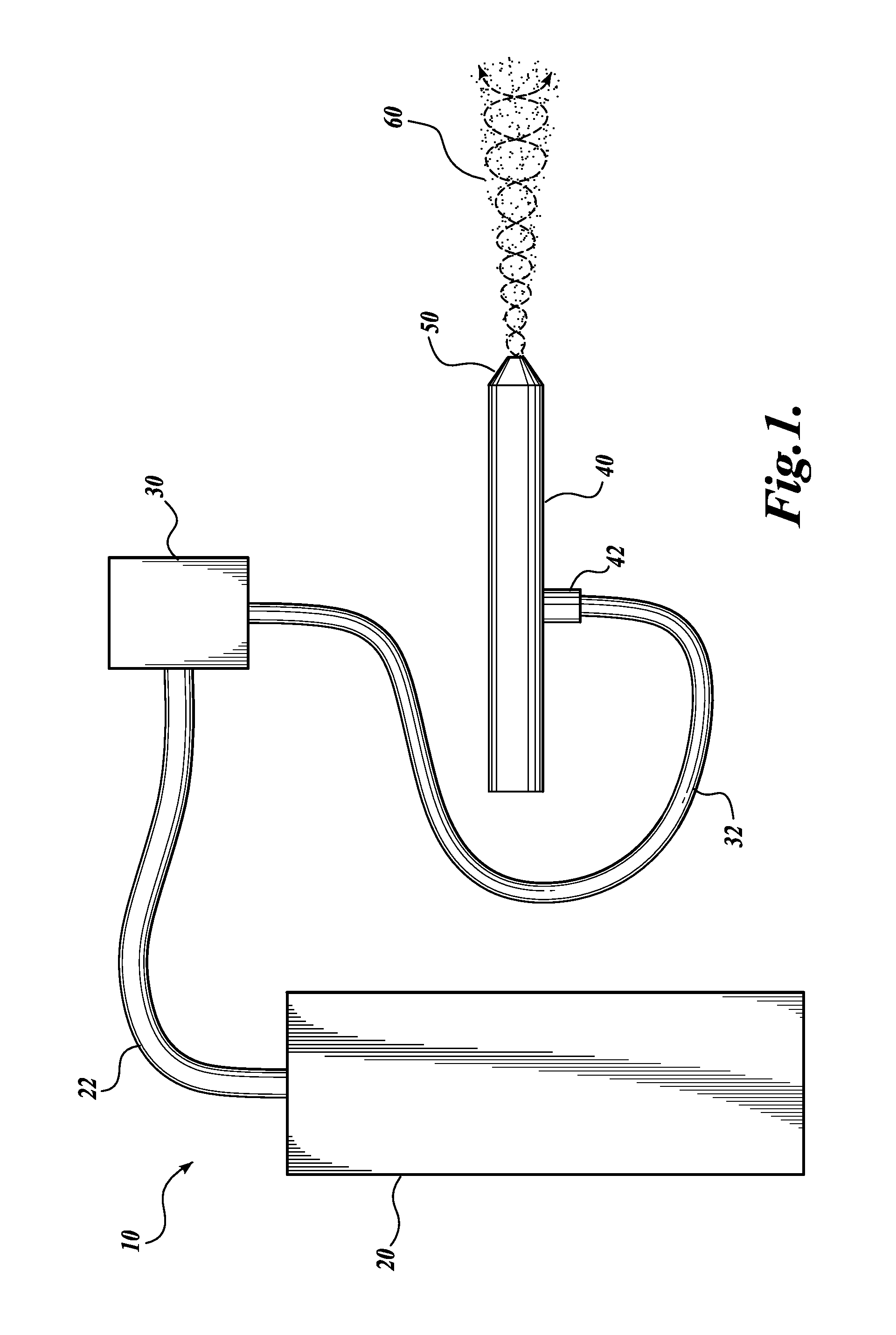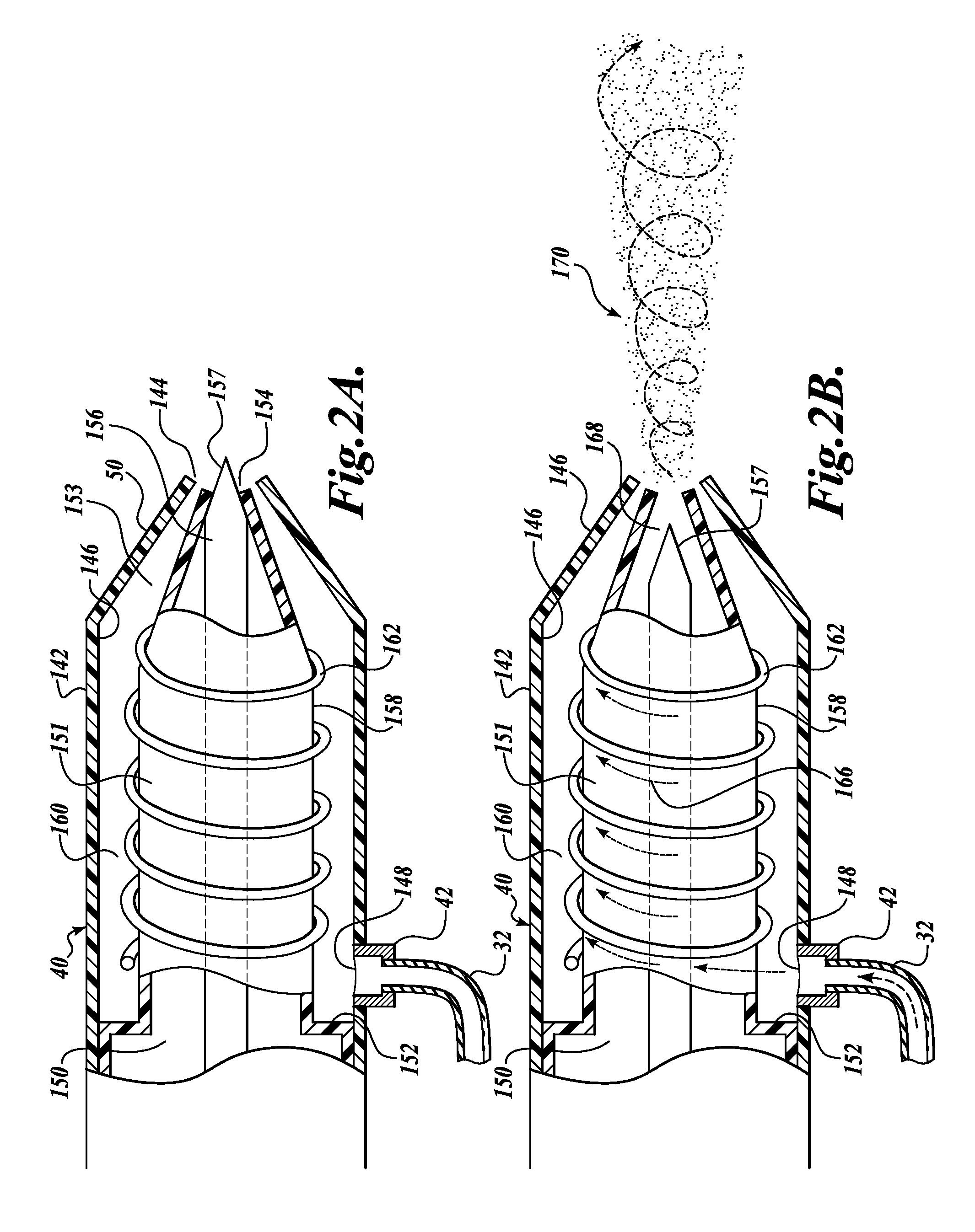Circumferential aerosol device
a technology of circumferential aerosol and airway, which is applied in the direction of medical devices, inhalators, medical devices, etc., can solve the problems of low fraction of olfactory drug exposure for drugs carried along the breath path, no suitable nasal delivery device that is sufficiently targeted, and rapid and direct uptake into the brain
- Summary
- Abstract
- Description
- Claims
- Application Information
AI Technical Summary
Benefits of technology
Problems solved by technology
Method used
Image
Examples
example 1
This example describes various functional parameters of the device illustrated in FIGS. 1 and 2.
The spray rate was tested by varying the driving pressure from 1 to 6 pounds per square inch and the diameter of the orifice 154. The spray rates were reproducible and within the desired range for human application, namely less than 50 microliters per second.
FIG. 9 shows the particle size distribution when water was sprayed from the device into viscous oil at a distance of 2 cm and 4 psi, and the resulting droplet diameters were measured using a microscope with size analysis software. A total of 199 measurements were made. The distribution shows that the device produces particles having diameters of from 5 to greater than 50 microns, and that the majority of the particle diameters are between 5 and 20 micrometers, with an average diameter of 11.2 microns. The size distribution obtained by this method of atomization is therefore desirable for nasal spray applications.
FIG. 10 shows the pene...
example 2
This example demonstrates the improved penetration of a simulated nose cone using a device comprising a plurality of outlets in comparison to a device having a single outlet with and without circumferential flow.
Methods:
Flow simulations were carried out using the Star-CCM+ computational fluid dynamics simulation software package (CD-adapco), version 3.06.006. In the simulation, a cone was used with similar geometry to a nasal cavity for the sake of simplicity. The cone was designed to be narrow towards the top with the only outlet for residual air located at the bottom of the cone. Thus, the air in the top of the cone was stagnant and had to be displaced in order for the nozzle flow to penetrate the top of the cone, much like the upper nasal cavity of a human. The dimensions of the cone were 7.5 cm from top to bottom, in order to realistically simulate nasal delivery to the olfactory epithelium of a human.
The following nozzle structures were tested:
(1) a nozzle without circumferenti...
PUM
 Login to View More
Login to View More Abstract
Description
Claims
Application Information
 Login to View More
Login to View More - R&D
- Intellectual Property
- Life Sciences
- Materials
- Tech Scout
- Unparalleled Data Quality
- Higher Quality Content
- 60% Fewer Hallucinations
Browse by: Latest US Patents, China's latest patents, Technical Efficacy Thesaurus, Application Domain, Technology Topic, Popular Technical Reports.
© 2025 PatSnap. All rights reserved.Legal|Privacy policy|Modern Slavery Act Transparency Statement|Sitemap|About US| Contact US: help@patsnap.com



